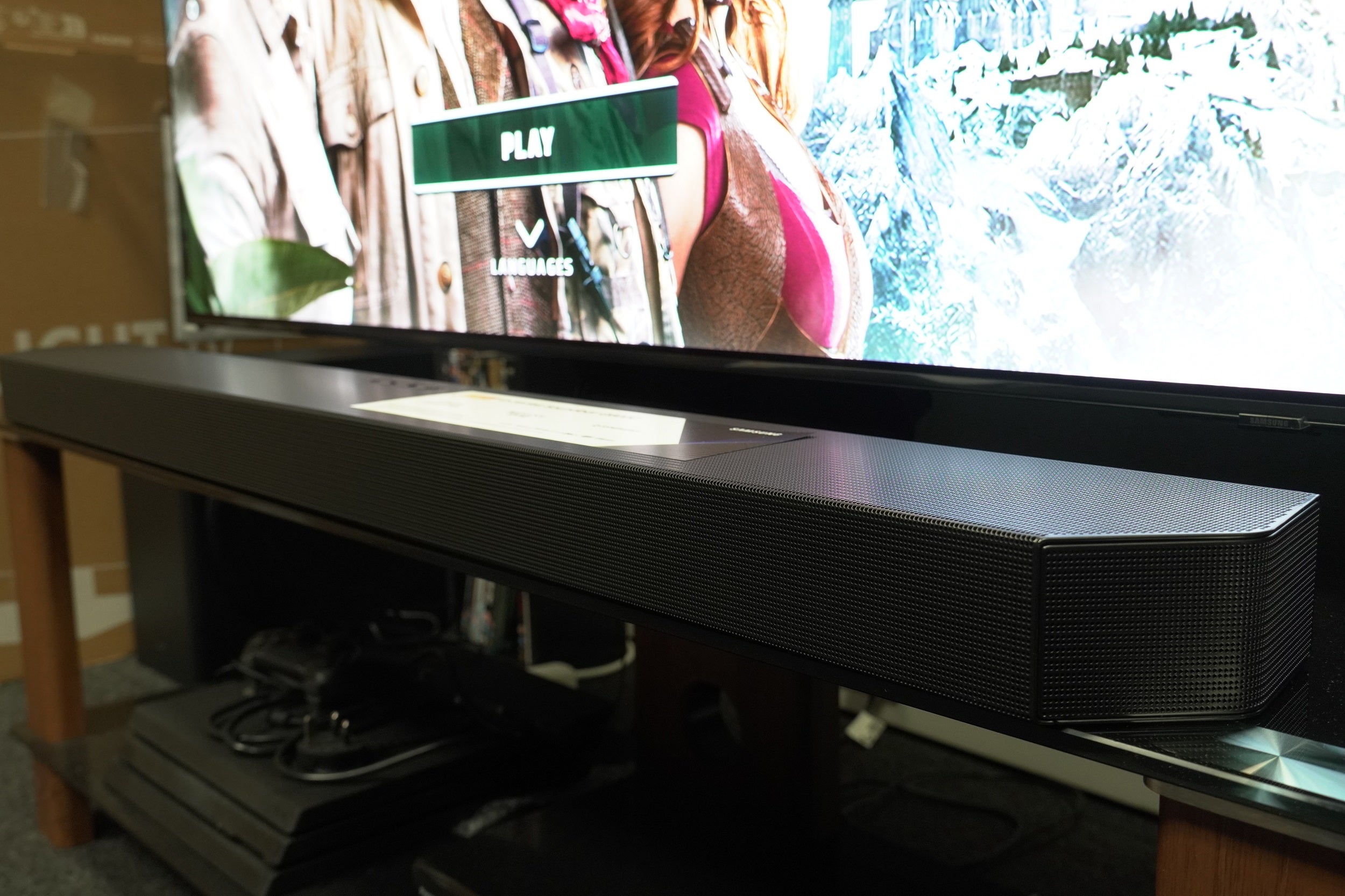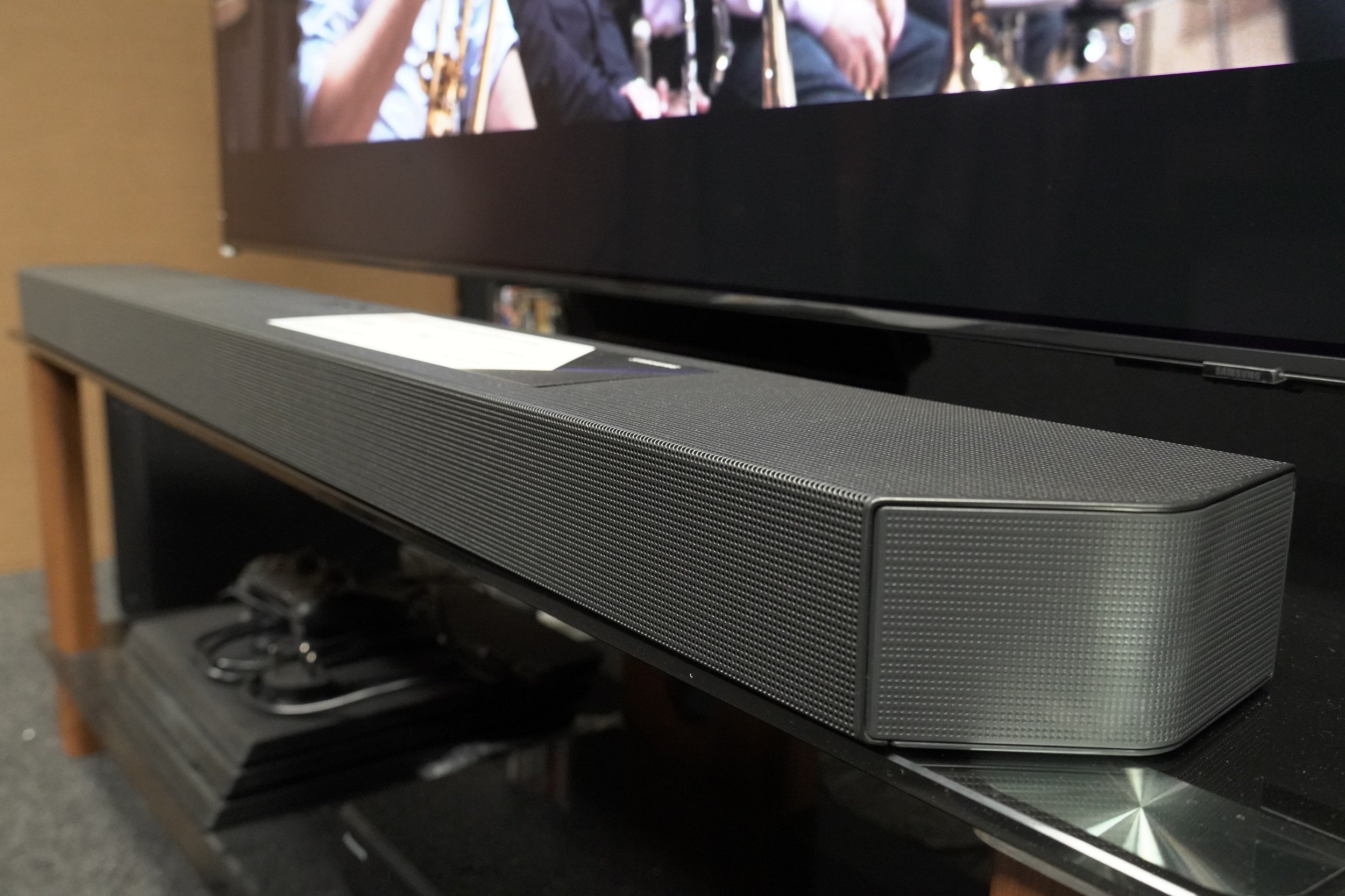Klipsch Cinema 400 Review
A 2.1 stereo soundbar system
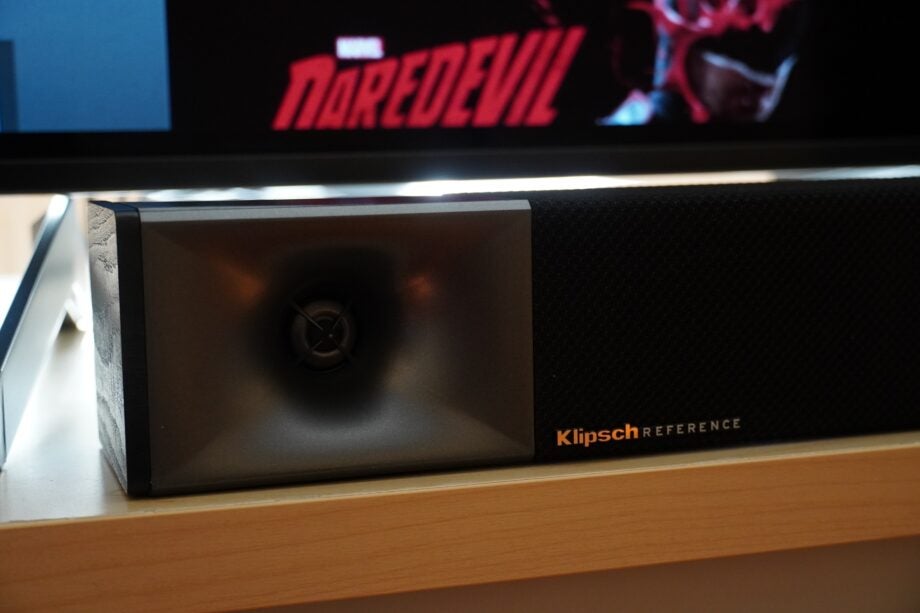

Verdict
As a means of boosting a TV’s sound, the Klipsch Cinema 400 delivers an energetic and confident performance. It’s short on features but will appeal to those who are after a simple soundbar experience. It’s certainly a soundbar to consider for movie night.
Pros
- Unique looks
- Assured bass performance
- Detailed, weighty delivery
- Confident music performance
- Simple to operate
Cons
- Looks may be an acquired taste
- No smarts
- Still a few technical gremlins
- Atmos soundbars available at similar price
- No official DTS support
Availability
- UKRRP: £379
- USARRP: $399
Key Features
- Horn-loaded tweetersKlipsch’s high-frequency drivers direct sound towards the listener
- Virtual SurroundCreates the impression of a bigger, wider performance
- Dolby AudioCan decode Dolby Digital soundtracks
Introduction
US brand Klipsch has made a concerted push into the UK soundbar market, with its most recent range seeing the launch of four models from the entry-level Cinema 400 to the Atmos surround-sound Cinema 1200 system.
But the UK soundbar market is a hard nut to crack. You only need look at fellow US brand VIZIO to see a company that dipped its toes into the market only to take a sabbatical not long after. It isn’t easy to make the noise you need to attract attention – but that hasn’t put off Klipsch from trying.
Design
- 101cm long
- Distinctive horn speaker aesthetic
- Housing made from wood
Around the budget/entry-level area for soundbars, style is usually traded for function. Oftentimes, your options are a black rectangular unit versus another black rectangular unit. To paraphrase Arrested Development, a soundbar is meant to be heard, not seen. Klipsch clearly disagrees.
I find the Cinema 400 to be one of the nicer, more distinctive soundbars at this price, although I’ll wager some will feel differently. If you’ve even seen a soundbar from Klipsch, the Cinema 400 doesn’t fall far from its design tree. At 40 inches long (that’s 101.4cm), it will require an adequate amount of furniture on which to perch. Brackets and screws are supplied if you want to wall-mount it directly.
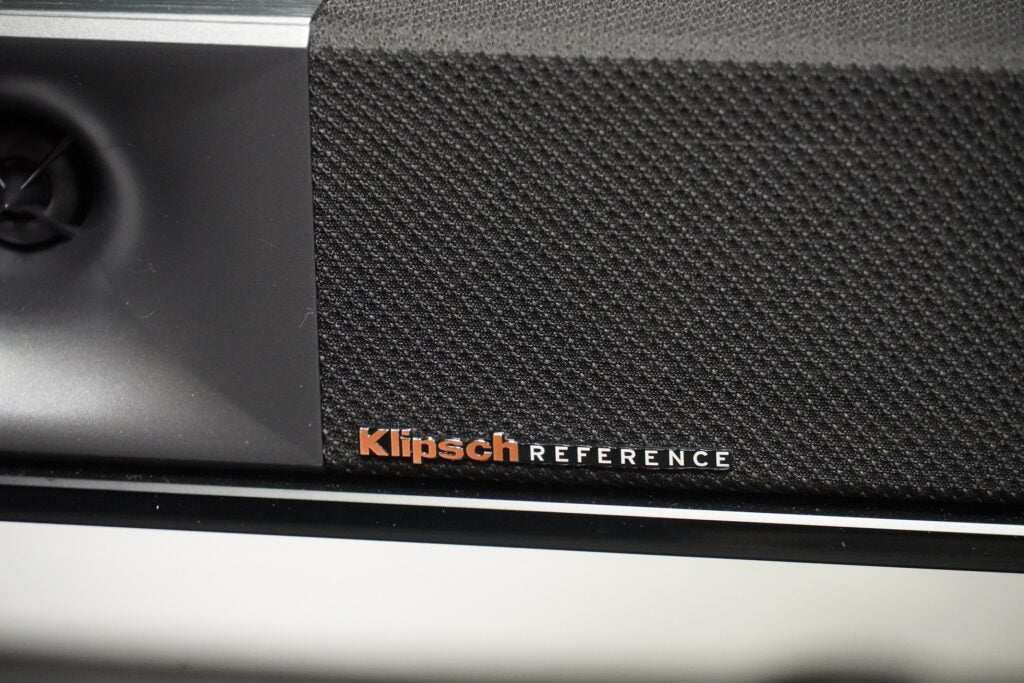
The structure is crafted from actual wood, wrapped in a black fabric grille with Klipsch’s distinctive horn-loaded speaker technology at either end.
The horn-loaded speakers are encased in a brushed metal finish and wooden endcaps – the Cinema 400 is virtually the same as the Cinema 600, just not as long (shorter by 14cm). On the right side is an array of buttons (power, source, volume up and down) and above that is a panel that displays the mode the bar is in.
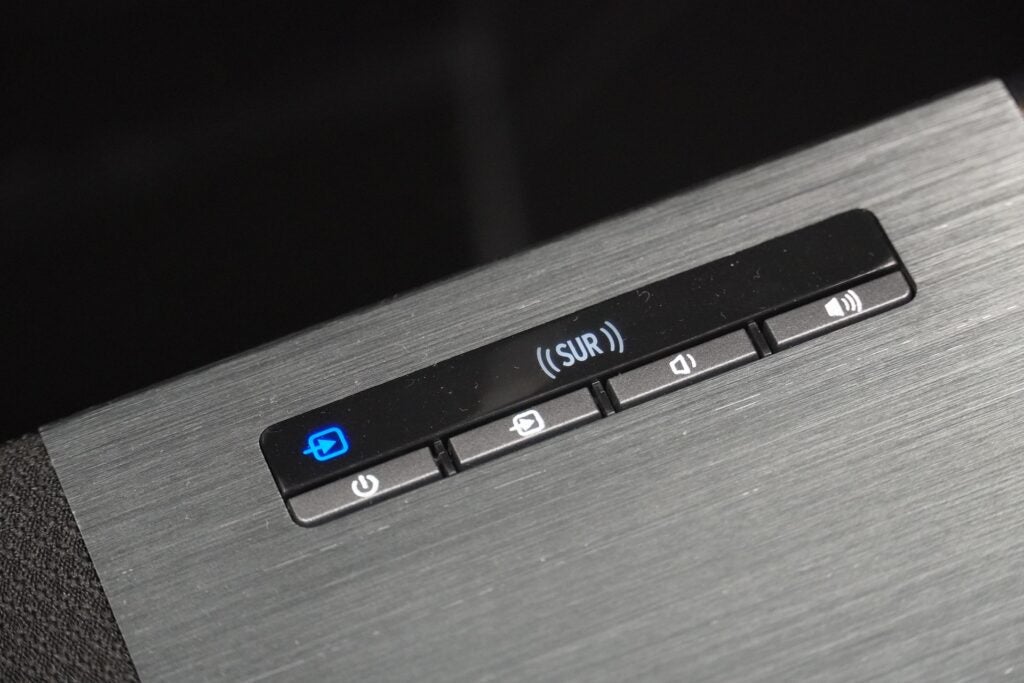
You can’t really see that display from a sitting position, so in the same vicinity but facing towards the listener is a strip of LED lights that cover sound modes and volume level. These LEDs can be turned off, but they’re useful if watching in the dark.

The accompanying wireless subwoofer is a ported cabinet made from wood (decked in a black finish); the port allows for deeper bass extension and dynamic range than you’d get from a sealed design. Placement can be either side of the main unit, and for the best bass performance Klipsch recommends putting it in a corner with a wall behind it.

The remote is an unflashy one with clicky buttons but no backlight. Everything needed for operation is included, as well as adjustment of the subwoofer balance. All in all, the Cinema 400 is solidly built and, aesthetically, does something different from the plain black soundbars that populate this price bracket.
Features
- No smarts or Wi-Fi
- Dolby Audio decoding
- No official DTS support
- Digital and analog inputs
- No rear speaker support
Since the Cinema 400 is the entry-level model in Klipsch’s current soundbar range, it omits smarts completely. There’s no Wi-Fi, no voice assistant support or app. It is a simple soundbar for practical needs.

This review sample of the Cinema 400 wasn’t the first I received. The previous sample had a few issues: a combination of turning itself on, randomly rebooting and suffering from volume spikes.
The new sample still randomly turns itself on, and it does go out of sync playing Star Wars: Rogue One (and only Rogue One). Neither does HDMI ARC appear to be enabled by default (at least it was disabled on this sample). For all its purported simplicity, the Klipsch can be a bit fussy.
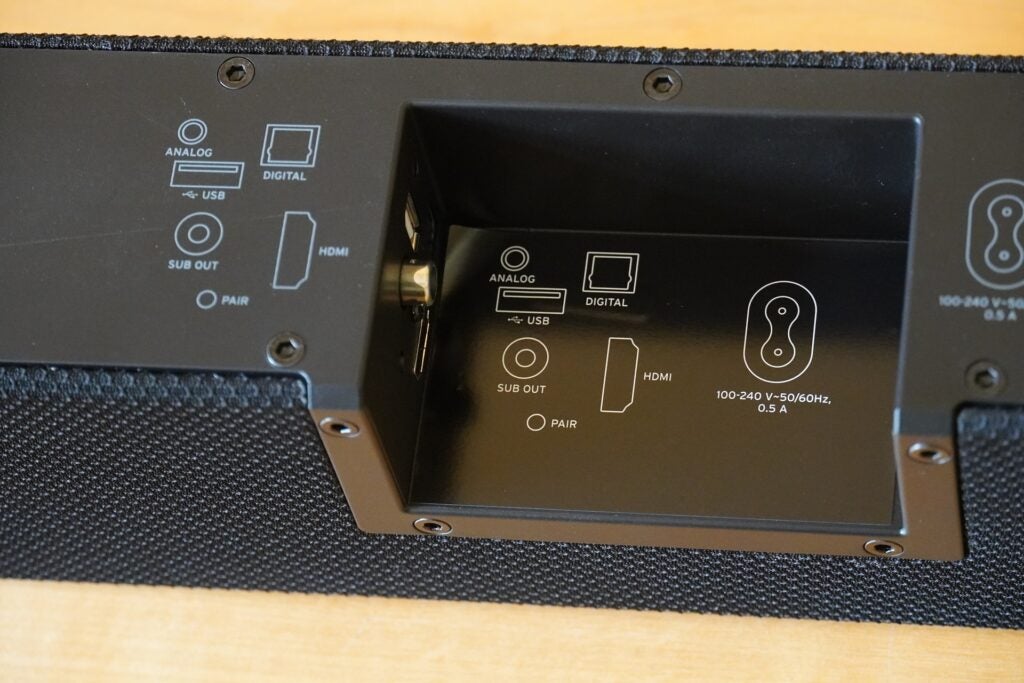
Around the rear are HDMI ARC, USB, digital optical and analog inputs, with a sub-out if you want to connect a different subwoofer. There’s no eARC support, which means no Dolby Atmos and DTS:X – the Cinema 400 is strictly a stereo affair that plays Dolby Digital tracks, and Klipsch says it doesn’t support DTS soundtracks (although I still managed to play them). With Bluetooth there’s the option of streaming from a smartphone, tablet or other device.
There’s a page in the manual about programming control of your TV remote with the soundbar, but I doubt most will even consider doing so. Dialogue, Surround and Night modes are on the remote, and a final note on the features is that there’s no upgrade speaker path with the Cinema 400. The Surround 3 wireless speakers aren’t compatible with this model.
Sound Quality
- Well-integrated bass
- Good mid-range delivery
- Very good with music
Armed with what I’d call an exotic speaker array (at least at this price), the Cinema 400 sports two of Klipsch’s 1-inch tweeters with 90° x 90° Tractrix horns that fire audio directly to the listener. The mid-range is covered by two 3-inch oval fibre cone composite woofers, and the subwoofer has an 8-inch downfiring drive unit.
With all this in play, the Cinema 400 delivers a satisfyingly muscular sound across the range of content I played. Dune (4K Blu-ray) requires a strong bass presence and the Cinema 400 said ‘no problem’ with a big, weighty and fulsome performance that provided heft to Denis Villeneuve’s sand-blasted epic.

Bass is well integrated, delivered with clarity and depth. The Cinema 400’s subwoofer complements the main unit rather than overwhelms, at least at default settings.
Dialogue is clear, despite this 2.1 stereo system having no dedicated centre channel. I’ve heard no sibilant traces, and male and female vocals come across with naturalism. There’s a Dialog Enhancer, but the effect is small – slightly more firmness and presence. It doesn’t alter the tone of the delivery.
Sticking with Dune, the Klipsch finds plenty of detail, the vibrating, electric feel of the body shields in the training fight between Gurney and Paul is brought to life with intensity.

It isn’t the widest presentation, but switch to the Virtual Surround mode and the Cinema 400 goes bigger, effects and dialogue are lifted off the screen towards the seating position; with sounds dispersed towards the edges of the bar to make the presentation less flat. I did notice while watching In The Heights that in Virtual Surround mode that dialogue was a little divorced from the actor’s mouths – something about the rhythm of the words felt off.
With music the Klipsch Cinema 400 is strong. There’s a focus on dialogue – as with TV and films, there’s weight to lyrics – and there’s detail, dynamism and clarity to the mid-range performance, with high frequencies clean and sharply delivered. Bass can dig deep; the drum beat in Nelly Furtado’s Maneater is a confident, thumping effort, and again the Klipsch keeps the bass in check.
Listening to The Preatures’ Is This How You Feel in Virtual Surround, while the sound is bigger than the dimensions of the bar, the tone of guitar sounds slightly strained with the bar’s virtual processing. Nevertheless, the Cinema 400 engages – and with music, that isn’t always a guarantee where soundbars are concerned.
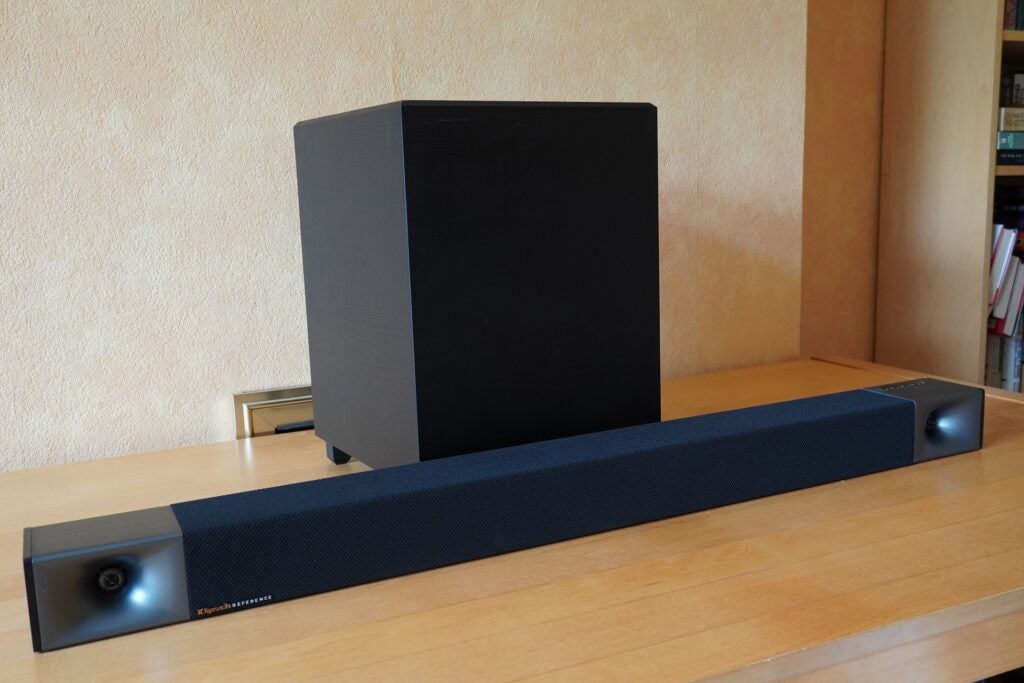
Latest deals
Should you buy it?
If you want an uncomplicated soundbar The Cinema 400 is pretty much a plug-and-play effort, foregoing smarts and the complexities of premium soundbars to focus instead on boosting your TV sound.
If you don’t have space to accommodate it At 101cm, this is a full-sized soundbar. If you’re thinking smaller, or are constrained by the space you have, you’ll want to seek out a more compact soundbar.
Final Thoughts
I really enjoyed my time with the Cinema 400. It delivers confident stereo performance with TV and film, and is one of the more enjoyable soundbars with music, too. The aesthetics may be an acquired taste, but I appreciate the difference from the herd of black rectangular boxes.
There are a few technical niggles, and compared to other soundbars around this price, the Cinema 400 lacks features, rear speakers can’t be added, and there’s no support for Atmos and DTS:X. As such, this soundbar is aimed at those who want to elevate their TV’s sound for an uncomplicated listening experience.
How we test
We test every soundbar we review thoroughly over an extended period of time. We use industry standard tests to compare features properly. We’ll always tell you what we find. We never, ever, accept money to review a product.
Find out more about how we test in our ethics policy.
Tested with a range of soundtracks
Tested over several weeks
FAQs
There’s no support for lossless soundtracks such as Atmos; the Cinema 400 can play Dolby Digital soundtracks.
According to Klipsch, there’s no official support on the Cinema 400 for DTS soundtracks.
No, this Klipsch model doesn’t support the Surround 3 wireless speakers, but the Cinema 600 and above does.



